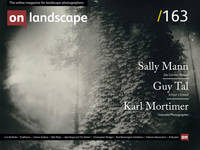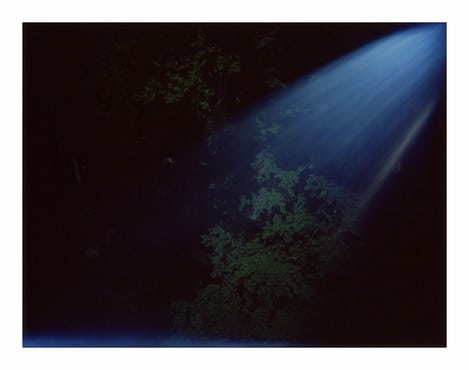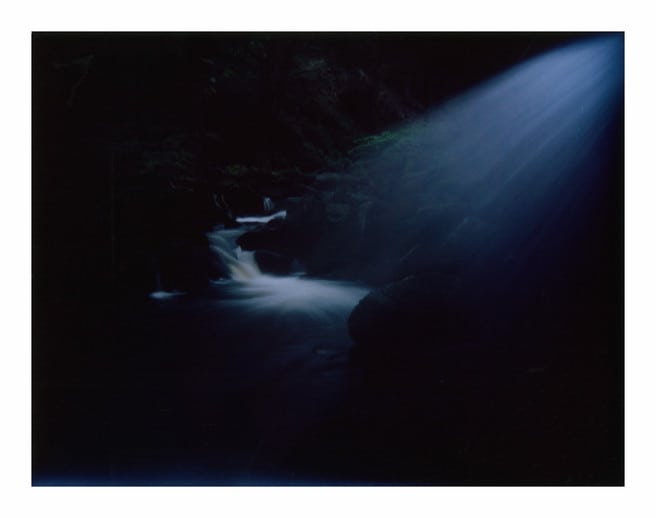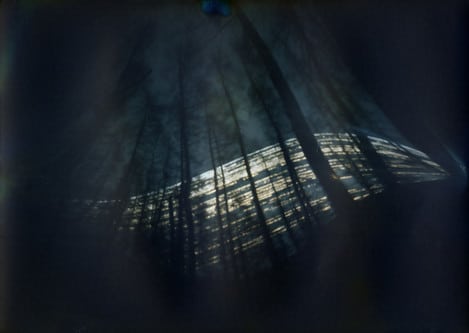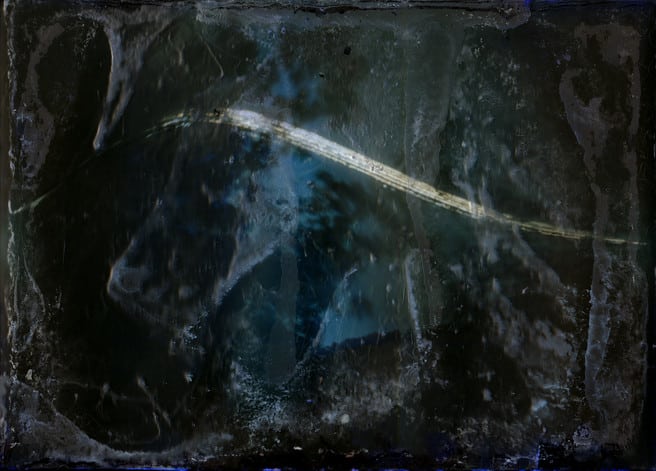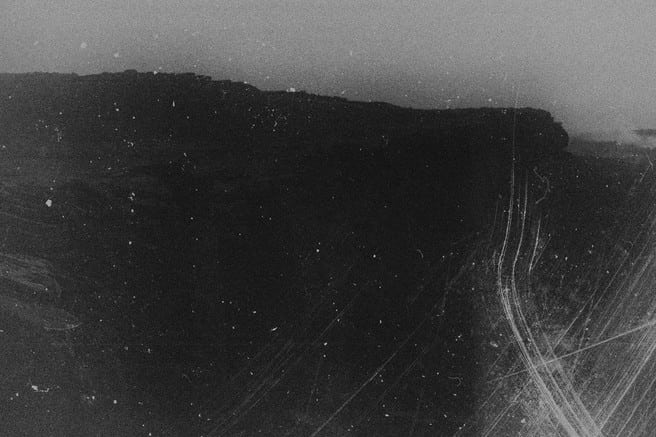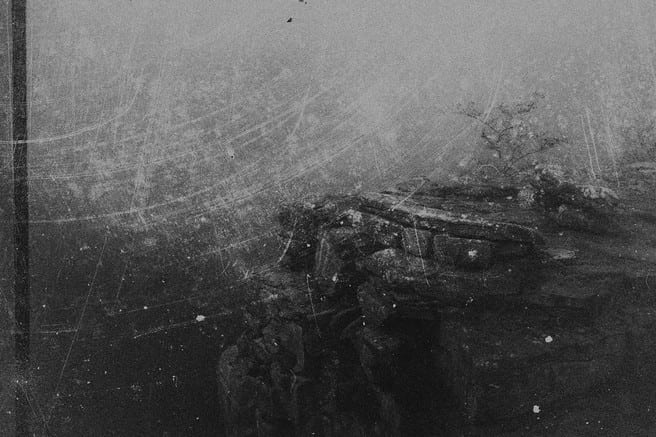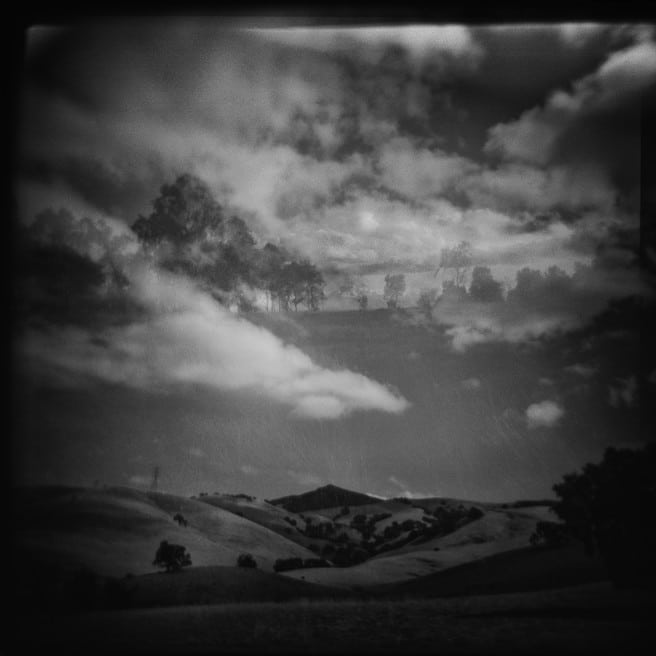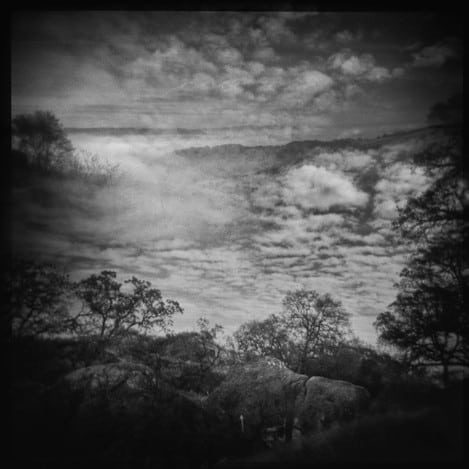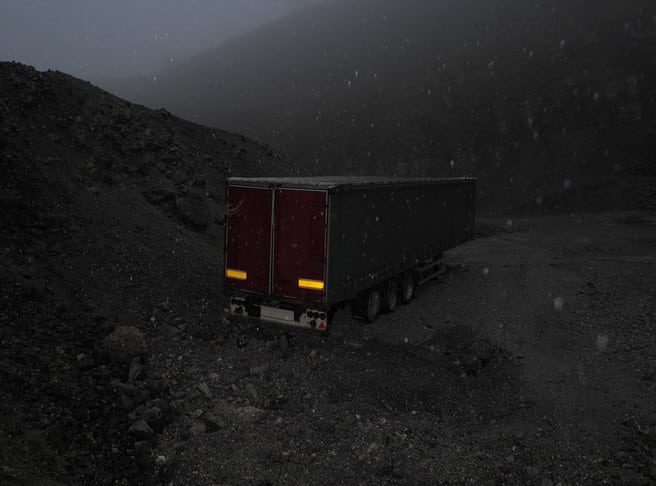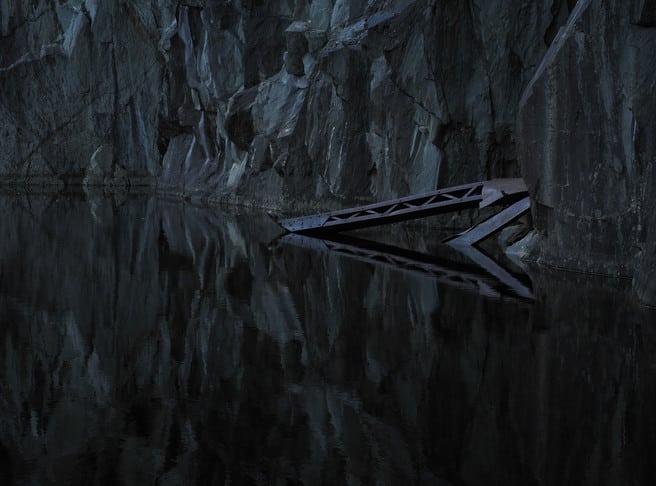Revisited

Al Brydon
I'm a photographer based in the north of the UK working on long term landscape photography projects. I have been published and exhibited both in the UK and abroad and am co-founder of the Inside the Outside photography collective.
Landscape photography is the perfect vehicle for narrative and storytelling. I'm interested in the history of landscape and human interaction and alteration of landscape. The long departed people who have shaped that world sing songs. I'm slowly learning to listen.

Charlotte Parkin
Head of Marketing & Sub Editor for On Landscape. Dabble in digital photography, open water swimmer, cooking buff & yogi.
Back in May 2013, Al Brydon was our featured photographer in issue 58. We caught up with Al to hear more about how his 'The dark project' panned out, his new project 'Solargraphs', and his forgotten 20 rolls of film he re-exposed...
CP: You talked about “downgrading’ to your Holga camera and from that, the Holgaroid series developed, tell us more about that. Is the series still ongoing? Do you still use the camera? Have you downgraded again?
AB: Yep. I thought I couldn't reach a new camera based nadir until I did. It got even simpler to the point where I was making cameras out of empty beer tins with a tiny hole for a lens. More on this later though.
Holgaroids was never really meant to be a series. I'd been working on a fairly intensive body of work for roughly two years and I saw the Holgaroids as a way to decompress and simplify my practice. I bought a Polaroid back for that particular camera and just started to make the work.
So much of the work I make is about walking. 'The lost art of walking to nowhere ' became a bit of a mantra for the series as it progressed and I realised it had become something other than a few Polaroids. I'd had been reading Moby Dick by Herman Melville and there was a particular line that I kept going back to. ‘It is not down on any map; true places never are.’ The quest for beauty (or what I think of as beautiful) just made finding it all the more unattainable. It became clear I was looking for something else but that would only be found when I stopped looking.
I finished the series some time ago and gave away the Polaroid back to a friend. She's now creating her work with it and the world keeps turning exactly as it should.
CP: You were working on ‘The dark project’ when we spoke last. How has that project panned out?
AB: It's still ongoing. I originally called the series 'Acyrologia' but found I couldn't pronounce it with any regularity and people quite rightly kept asking what it meant. It was a title too far so it's been scrapped. I think titles and words are what I struggle with the most and I've generally struggled with this body of work on many occasions. I even published it as finished way before it ever was and subsequently removed it from my website until I could think about where it should go.
It was rushed into something it wasn't meant to be. Photographers rarely seem to talk about their failures and mistakes (for obvious reasons I guess) but for the work to become what it has finally become these mistakes had to occur. I gave it a rest for a year and started shooting for it again last winter. I still struggle with it but I love that it isn't easy. Everything about it is difficult and frustrating. Also, enough time has elapsed for the initial reasons for making the work to have distorted or evolved (depending on how you look at it) into something completely different. I continue to be compelled to make work at night or dusk. Aside from the aesthetic of the photographs, there's something challenging about the process that I clearly enjoy. I usually work very quickly when I'm out but making work for this series takes planning and a level of pre-visualisation I am still unaccustomed to. It's very different to everything else I've done and I've started to include work made during the day too. Hopefully, it'll keep evolving and I'll have something to show you all at some point.
CP: Your Solargraphs series - is that a recent project you’ve been working on? What was the appeal of this project?
AB: Ah, the Solargraphs. They are kind of my main focus at the moment due to the impending book later this year from J.W Editions. For those of you who haven't a clue what a Solargraph is, allow me to furnish you with a bit of info.
A solargraph is a pinhole camera. I make mine from old beer tins with a pinhole placed half way up the can. I then insert a piece of 5x7 standard darkroom paper and tape a makeshift lid on. These are then gaffer taped to something static and left to expose for anywhere between two weeks to a year. Then if I've hidden them well enough and they've not been tampered with I pick them up and hope they've worked.
As with the Holgaroids, these were never meant to be a series. Then again we're something I liked to do when one series had been finished and I was kicking my heels waiting for the next one to spring out of the muddle which is my thought process. That was the initial appeal but the more work I made the 'how' became less important and the 'why' became the all encompassing reason. I started to wonder what the landscape looked like when I wasn't there to experience it. As the exposures for these range from a few weeks to over a year, it is essentially a different Al collecting the can than the Al that had left it. This is in itself pleasing. Plus what's implied in the photographs but isn't actually visible is for me personally is important too. All the animals and insects, other people, any movement other than the arc of the sun (and sometimes moon) isn't actually visible in the finished photograph but it's in there somewhere. I don't want to give too much away. If you're interested you'll just have to buy the book. Or don't see if I care. I do care. Buy the book! I need new socks.
CP: 'Based on a False Story series' -Twenty rolls of film found in a draw and no recollection of what was on them. How did you feel when you re-exposed them and reflected on what you’d taken. Did you feel that you’re photography have evolved if so in what way?
AB:
It was an odd sensation re-exposing them. I felt I was destroying the past. I didn't really know what was on them but I knew there were going to be some irreplaceable photographs in there somewhere. Friends no longer with us etc. I think that the decision to create something new from this destruction was completely the right one. My life now couldn't be more different than the one I led then. It felt like the right thing to do. There wasn't really any pressure in making the new photographs. I just tried to imagine my younger self walking with me while I was making the work and what we'd talk about. Would we have even got along? I could photograph whatever I felt like. It almost didn't matter. It's only when I started to get the work back from the lab that I realised what I had. Total serendipity from a destructive process. I wanted to continue that destruction so after I got the films I kicked them around my cellar for a bit. The scratches and dust offering yet more abstraction and confusion.
I loved the fact there was a finite number of films. Once the last one was gone that was it and the working connection would be severed and I was left with a body of work. I did, however, keep one film back that I will re-expose in another fifteen years time.
As for my work evolving, I'm certainly hoping so. In some cases 15 years had elapsed between each click of the shutter. I must admit it's difficult to express how it has evolved. I always feel like I'm just beginning with photography., I like feeling this way. I never want it to feel like a journey completed. There's something to be learnt from everyone and I want to keep learning. That quest for 'fame and glory' certainly diminishes as the years zip by. Ego's deflated (in some cases) and I find myself just wanting to make the work. That's it.
CP: You said in your featured photographer interview “Retrospective revelations about what I was thinking can be fairly illuminating and may then influence the next set of photographs. Building upon old ideas and taking them somewhere else seems to have allowed an evolution to the work.” Based on the last story, do you think your reflections on this have helped shape your recent work?
CP: All the work I've ever made has informed the current or recent work. It can't do. You can only draw on your own life and experiences when creating something you feel is important enough to share with other people. I find myself thinking again that one of the most basic human needs is to be understood. We're all as confused as each other. If I can get just one person to engage with a piece of work I've made then I've made a connection with that person. That's all I can hope for. Even if no one looked at the work I'd still make it of course. But it's my own work first and foremost. If you don't fall in love with your own work how can you expect anyone else to?
Q - In your featured photographer interview you talked about a collaboration with JM Golding on the 'Tales from a non existent land', which was something that you were working on. Tell us more about this project now it’s finished.
AB: It ain't finished. In fact, we've just done another roll. We recently exhibited a few pieces stateside which seemed to go down well. I've talked about making connections with people and this photo series has done just that and more.
The premise was thus. We each would expose a roll of film (Jacki in California and myself in the UK), mail the film to the other person, and re-expose the film we had received. Neither would know what was already present in the latent images on the film. We agreed on a few general parameters such as using Holga plastic cameras and making the exposures at the film numbers rather than in-between but that was it.
These cameras are at best unpredictable and obviously, we were unaware of what each other were photographing. It sounds so hit and miss but it really worked. So we started to create an imagined world that only exists in these photographs. I'd try and imagine Jacki walking with me while I made me exposures for the project. It was really all about a connection with a person I had never met. On the last roll, we agreed to listen to the same album by 'A Winged Victory for the Sullen) while we were photographing to see how that would affect the work produced. Eventually Jacki came to visit me and we were able to walk together for the first time and of course, we did a roll of film each.
I'm incredibly grateful to be able to work with Jacki and she's become a very close friend. And it's all been made possible by a £30 plastic medium format camera and two people's willingness to collaborate. If you happen to be in California some photographs from the series are being exhibited at the Adobe Art Gallery in Castro Valley. Do pop in.
CP: You mentioned that becoming a father had meant putting a few things on the back burner. What other changes in your art has this influenced?
AB: Aside from the continuous pink fog of tiredness? I'm certainly more risk averse these days but I think the most noticeable change has been the massive acceleration of time. There is maybe an urgency to make work while I am able. A few years ago I worked on a series called 'As we Wander' which in a nutshell was about the last photograph I'll ever make. There has to be one. There will be a time when I'm unable to do what I do.
It isn't a bad thing just the way of things. When I was younger I thought I was invincible and without faking up a rampage led my rather chaotic life accordingly. Now things are a little more relaxed. Another change or realisation occurred when I bought my boy a digital camera. At the end of the day when he was safely in bed, I'd go through his pictures to see what he'd been doing. He simply photographed what was important to him. I learnt a lot from looking at his photographs.
CP: Your part of the collective called ‘Inside the outside' with founding partners Joseph Wright, Rob Hudson and Stephen Segasby. Tell us more about the role of this in your work.
AB: ITO was effectively born in a horrible pub in London one drunken afternoon a couple of years ago. I don't recall a great deal about the evening. Coked up Chelsea fans wanting to thrash yours truly and angry air hostesses rolling on KFC floors. It started exactly as it should have.
We all wanted a vehicle for sharing work from other photographers we love and for the exchanging of ideas and concepts. If you visit the ITO website there are free articles written by photographers who've been gracious enough to share their work with us.
The four of us are all very different but I think this is why it works as a collective.
As for how being involved with the collective has affected my own practice I think working so closely with three other photographers whose work makes me want to make better work has zipped me off in all sorts of different directions. I love looking at someone else's work and thinking 'I wish I'd made that'.
It a wonderful thing to be able to work with other people but at the same time, there's the realisation we don't want to get swallowed up by this. We are individuals with individual ideas. When we come together good things seem to happen. We'll keep at it.
Putting on the exhibitions has been the most enjoyable aspect for me personally. Our first one at the Photo parlour Nottingham went better than I could have ever hoped for and the same exhibition then travelled to London to be shown at MMX Gallery. We have the next show this year with new work at a gallery in the Midlands. I'll keep you posted.
CP: How have you found collaborating with other photographers for your exhibition?
AB: It's been an utter privilege sharing work from the amazing photographers who have shown with us plus we learnt so much for the first two exhibitions. For the next one, we've been a little more curatorial with who and what we want to show. Just come along to the show and say hello.
CP: You feature other photographers articles on the website - how do you find curating the content on there. Is there a theme to the work you publish?
AB: I think the main premise with ITO was to show work from other photographers. There's so much good stuff out there. So many people making thoughtful and engaging work. It's just a case of approaching said people and asking them if they'd like to contribute. Simple as that. If they say no or they haven't got the time its no bother. Finding good work isn't a problem. Sure there are a lot more photographers nowadays but it if you're making compelling work I like to think one if us will find you at some point. I like the premise of a photographic community and a supportive one at that. That's one of the things I personally wanted to achieve with ITO.
CP: What projects are you working on now?
AB: Solargraphs. The evolution of 'The Dark project I mentioned earlier. I also started a series early this year making paper negatives from positive 35mm slide film which seems to be called 'Currently Untitled'. I've also been shooting some post-industrial 5x4 mono stuff but have put it on the back burner while I concentrate on the above.
I still utilise Instagram on a daily basis although that fulfils a different need to the other project work. The ITO collective shot some disposable cameras last Winter for an upcoming zine we've been planning on doing and the collaboration with Jacki in the States rumbles on. I've also been shooting graveyard bins in my local cemetery. Busy busy.
CP: How has your post processing workflow changed, if at all
AB: If I ever get a workflow I'll let you know.
CP: Thanks so much for your time Al, and it's been great to catch up after 5 years.

